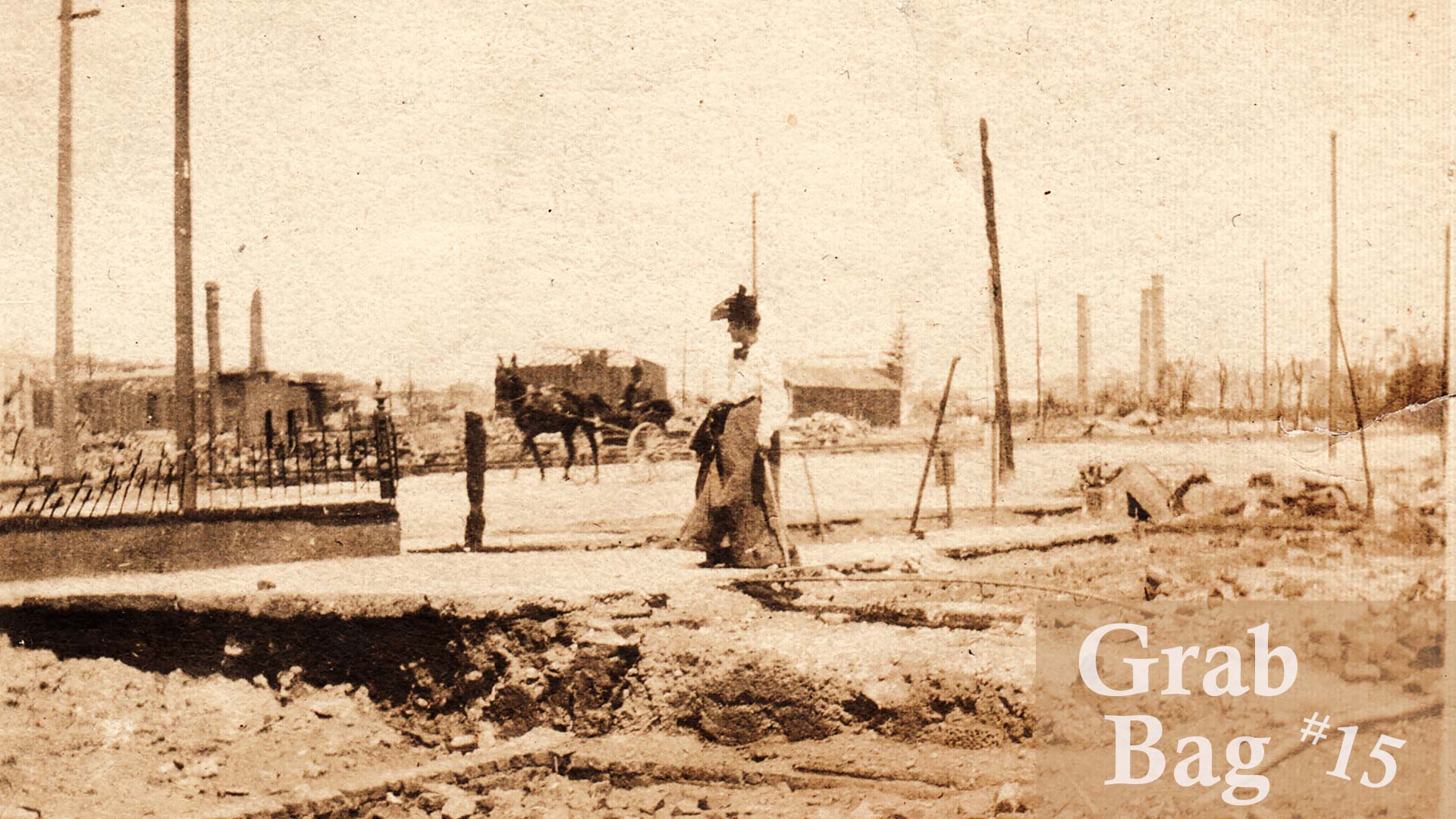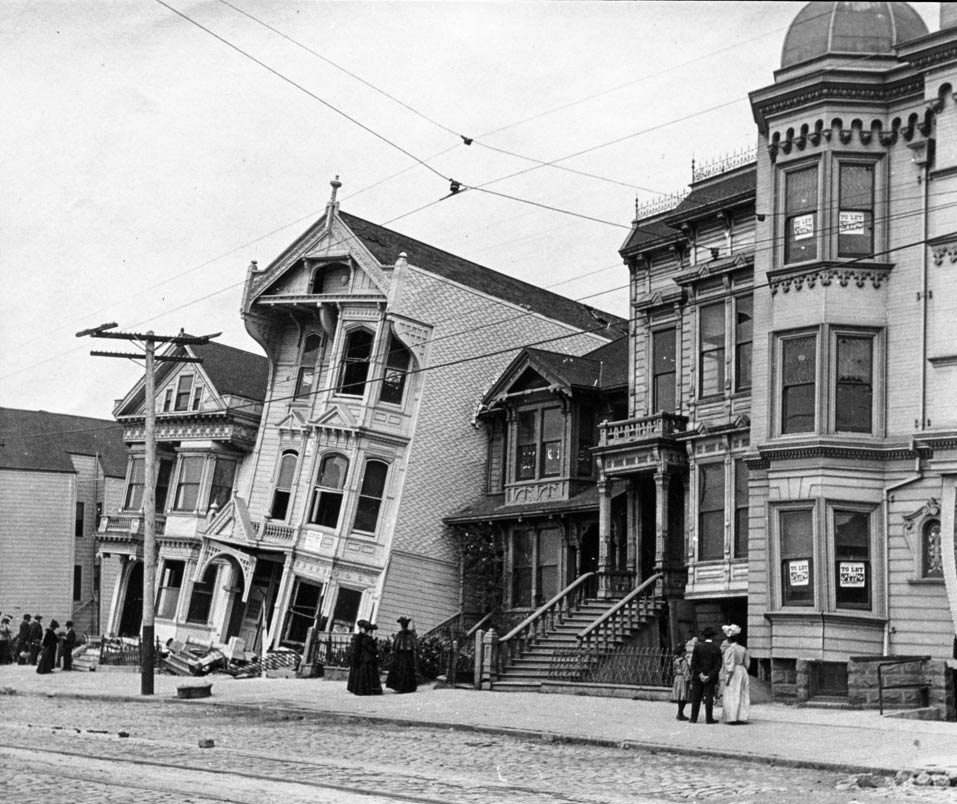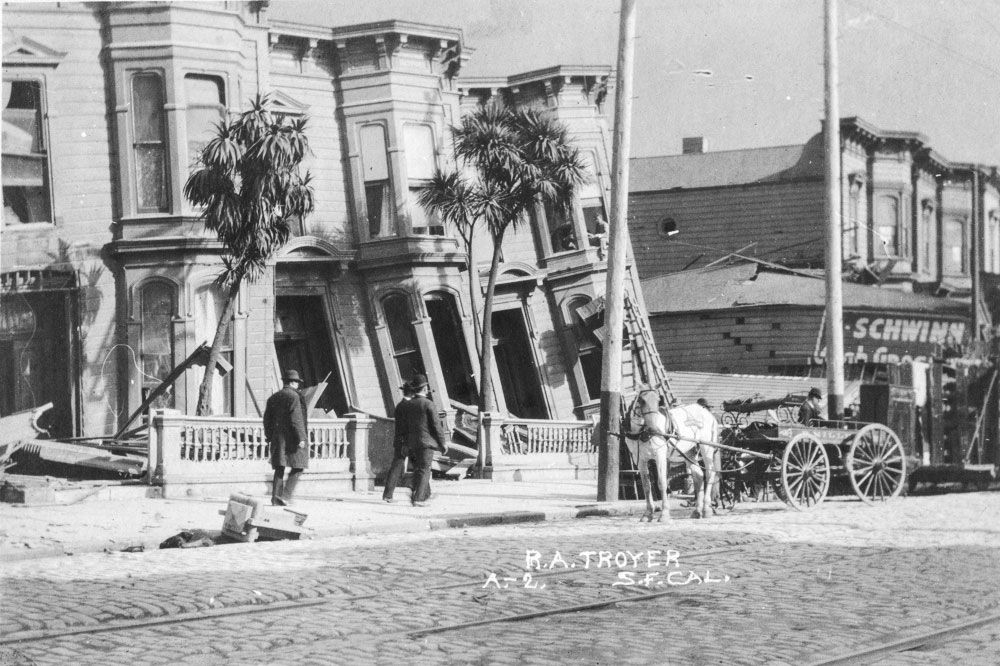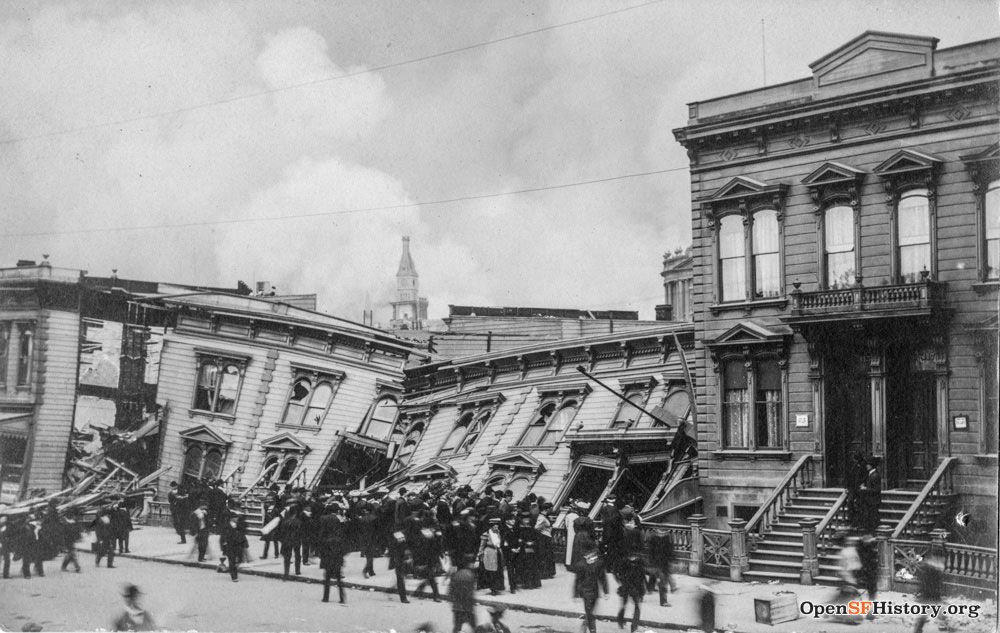Grab Bag #015
Earthquake, fires, and true love found... all in one Woody LaBounty Grab Bag.

An Earthquake Love Story

My great-grandparents were probably sleeping. Or perhaps they had just gotten up, Milton Slinkey in a flat at 866 Ellis Street just off Van Ness Avenue, and Ethel Neate, crowded with her sister, brothers, parents, and a couple of boarders a dozen blocks south at 1755 Howard Street on the edge of the Mission District. It was 5:12 in the morning when the world began to shake.

Tuesday, April 18th, will mark the 117th anniversary of the biggest thing ever to happen to San Francisco. On that morning in 1906, a massive earthquake hit the Bay Area. Stone buildings shed their skins. Chimneys and brick walls collapsed on streets and into adjoining buildings. Roadways split and sunk. People were injured or killed by crumbling rooming houses, apartments, and warehouses.
Both Milton and Ethel’s buildings remained upright when the shaking finally stopped, but Ethel’s just barely. Anything and everything probably lay around the floors and plaster dust hung in the air. Neighbors on the other side of Erie Street had to escape their slumped home by ladder. Adolph Schwinn’s grocery three houses down from the Neates’ had cracked in the middle.

Milton was in in his early 20s and likely went out right away to tour the local damage or help neighbors. Houses had collapsed nearby on Golden Gate Avenue. He may have checked on his father, Colonel J. E. Slinkey, who with his new wife Hattie, lived just four blocks away at 593 O’Farrell Street on the corner of Leavenworth Street. Like many people who thought the show was essentially over, he may have even tried going to work.

Act II of the disaster then commenced. Fires broke out from busted gas mains and upset boilers in the industrial zone south of Market Street and began moving west.

